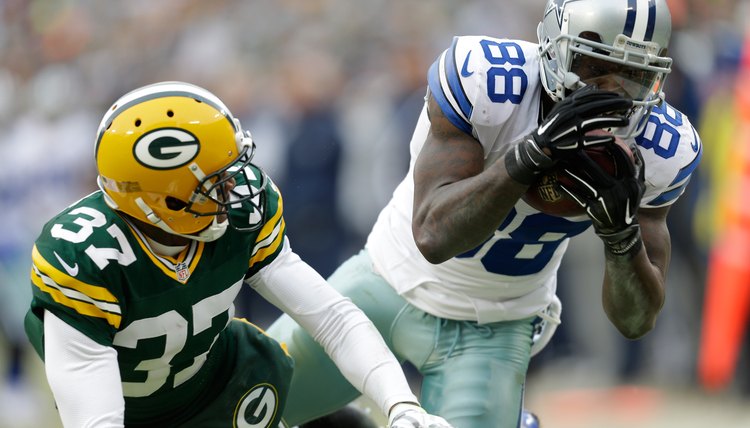NFL Catching Rules: What is a Completed Catch?

Hoping to avoid controversies like Dallas Cowboys’ wide receiver Dez Bryant’s ruled no-catch in the 2014 playoffs against the Green Bay Packers or Pittsburgh Steelers’ Jesse James' reversed touchdown against the New England Patriots in the 2017 season going forward, the National Football League most recently approved changes to the league’s catch rule going into the 2018 season.
The new (as of 2018) NFL catch rule determined that a catch is defined as:
- Control of the ball
- Two feet down or another body part down in the field of play
- A football move, including: a third step, reaching/extending for the line to gain, the ability to perform such an act
For more specifics on these rules, continue reading below.
Two Feet
In order for a pass to be ruled a catch in any situation- on the sideline, in the endzone, for a first down, for an interception, etc.- Players catching the ball must get two feet or another part of their body down in the field of play. If two feet or another part of the player’s body does not touch the ground, it is ruled an incomplete pass.
For touchdown catches specifically, the NFL rulebook states that the player must have clear possession of the ball while crossing the goal line. If a player has his feet in the end zone but receives the ball short of the goal line, this is not a touchdown by NFL football rules. If a player catches the ball, gets two feet down, and completes a football move, a loss of the football would be a fumble from that point to the end of the play.

No Feet
Previously, an NFL receiver leaping to make a catch in the end zone did not have to get any feet down. If he was forced out of bounds by defenders and the referees determined that he would have come down in bounds, his team would be awarded a touchdown anyway. This rule was changed by the NFL; now, on those plays, a receiver must get two feet down regardless.
However, there are still ways to score a touchdown without setting foot in the end zone. A ball carrier needs only to stretch the ball across the goal line to score a touchdown. His feet need only to be in bounds.
NFL Comparisons
NFL touchdown rules differ from those of college and other professional leagues. In college, a receiver is required to get only one foot down in the end zone to score a touchdown. The Canadian Football League also plays according to the one-foot rule. At 60 feet deep, the CFL end zone is larger than the NFL's 30-foot-deep, 160-foot-wide end zone.
NFL touchdown rules are still met with some controversy, but the league has been quick to rectify any gray areas to avoid conflict. With the abolition of the force-out rule, most touchdown rules in regard to foot position are cut-and-dried.
While modifications to rules like roughing the passer, pass interference and kickoffs seem imminent in coming offseasons, Roger Goodell and the National Football League continue to do their best to make the most out of the game of football.
References
Writer Bio
Based in California, Scott Levin has served as a writer and copy editor since 2000. His articles have appeared in the "Chico News & Review," "Wildcat Illustrated," the "Chico Enterprise-Record" and on websites such as The Sports Informant. Levin earned his Bachelor of Arts in journalism from California State University, Chico.
